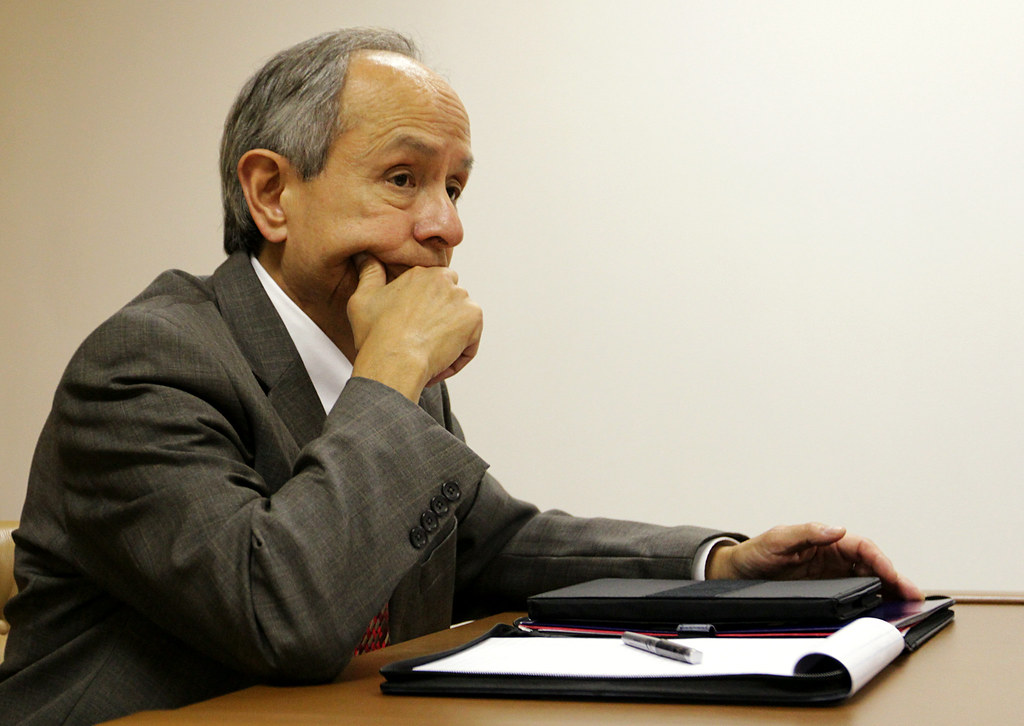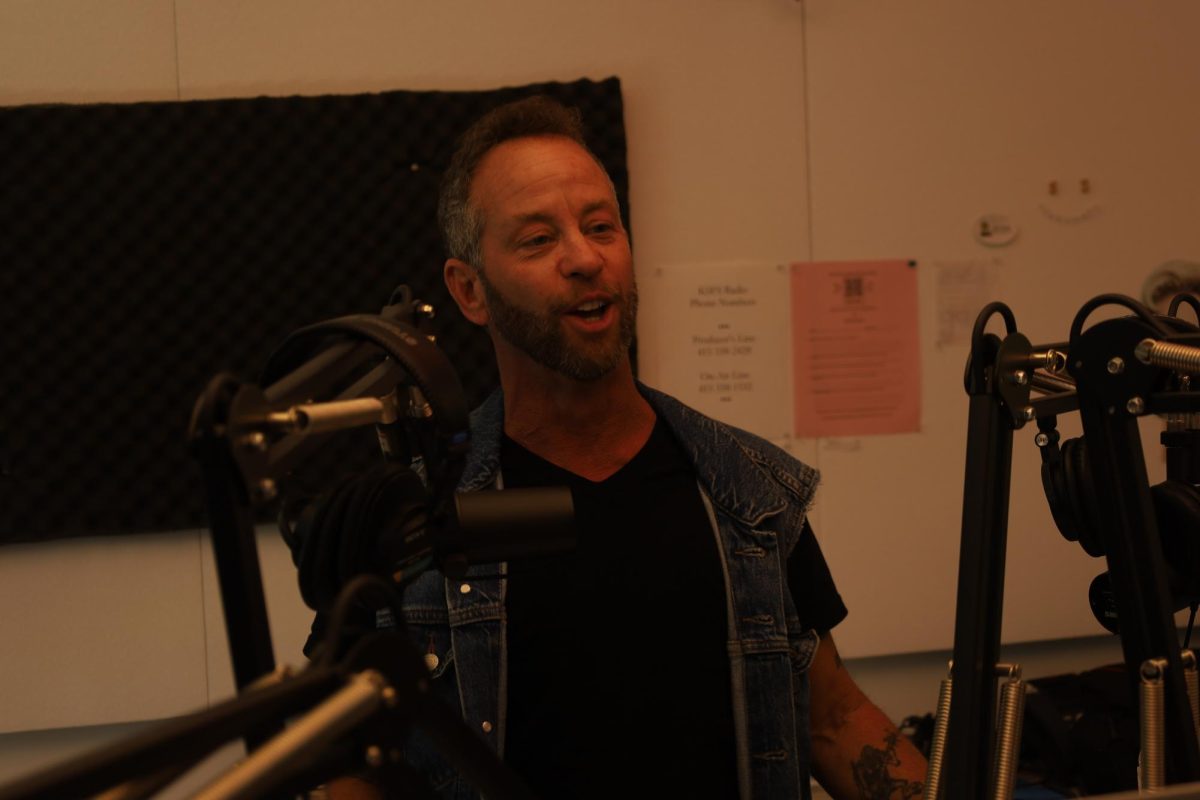
[soundcloud url=”http://api.soundcloud.com/tracks/78039859″ params=”” width=” 100%” height=”166″ iframe=”true” /]
At the outset of his second semester as president of SF State, Leslie E. Wong sat down with Xpress Editor-in-chief Kale Williams. In part one of our three-part interview, Wong discusses his move to San Francisco from northern Michigan, his recent entry into the world of social media and how funds from Proposition 30 have helped fill some gaps in the curriculum at SF State.
Kale Williams: Now that you’ve had a little bit of time to adjust to living in San Francisco, as opposed to Michigan, what is your take on the city and how do you feel about your decision to move here?
Leslie E. Wong: I have to tell you, my wife and I had a long conversation about that and we’re even more ecstatic now because we’re learning much more about the town and the kids on campus. There were a variety of things that were complete surprises to me that have been really quite spectacular. I’m also really learning and meeting the political environment that is San Francisco, Sacramento, and learning a lot about our place within those spheres of influence. I can happily report that people have great respect for what we do.
I’m running in to alums in all the right places and the question, in my next six months, is will I learn enough to take advantage of the low-hanging fruit and really create an environment where there is even more opportunity for students to bloom?
KW: That’s a good segue into my second question. What do you feel like your biggest accomplishments from your first semester were, and what kind of benefits will students be able to see from them?
LEW: Great question. I started yesterday, during the blackout at the Super Bowl, to roughly calculate the flight miles that I’ve covered in the last six months. I’m not trying to brag, so don’t quote me on this, but I had to look up the circumference of the planet to find out if I’d come close to that.
Two trips to Asia, Texas, New York, Southern California probably five or six times, Washington D.C. Obviously the two trips to Asia in December were big events. I was a guest of the Chinese government over there just a week after the new elections of the — what do they call it, the CCP? — the communist party and their election in December and their new leadership of the People’s Republic, and I actually got to meet the person who will run the entire educational effort. That was one reason why, in the short amount of time I was in Taiwan, I was meeting with alums. Part of the plan was to go from Taiwan to Beijing and come home. Because of the party activity in Beijing they got pushed back a week. I said, “Well I can’t go home and then turn around and come back,” and they said “What if we offer you a meeting with some important people?” and I thought “Now that could change my mind.”
I came home for a week and turned around and flew to Beijing to meet and the opportunities to really build a good relationship with our Asian neighbors is a huge potential issue. We already have a lot of students from Asia here, but the opportunity for even American-born students to see Asia as a possible career opportunity is in front of us.
I guess the reason that I bring up the traveling is that it also gave me a good sense of our alumni and their commitment to the University. That was the main motive to go to Taiwan, to meet with important people there, but also industry and alums and we’re building some great relationships that might very well turn into some career opportunities for state students.
KW: Is there anything that you wish you’d done differently in the first semester that you were here, or maybe something you wish you that you’d known then that you know now?
LEW: That’s a great question and, not really, and that’s what I have to say to you. That’s a great question because I was hoping to spend a lot more time building my cabinet, in terms of our relationships, and knowing what they do and what they are responsible for, but the rhythm in which the cabinet has come together has been phenomenal. I mean they are good working professional team. We like each other. We tackle tough issues and that was a worry that got taken off the menu pretty quickly. That enabled me to do a lot more travelling than I probably would have if it would have been a more normal adjustment to a new job.
KW: You told me last time that we talked that we sat down was that you were hoping to have a more visible presence on campus. How have you been received by students? Are there have been any drawbacks to your increased visibility?
LEW: The only drawback is that I haven’t been here to do it enough. I had a great chocolate night with some students, sitting room only. The cookies and chocolate disappeared in a very short amount of time. Great conversation. We had to cancel, too, because of some other campus issues, but I hope to get back into that routine this spring. That’s been pretty good. I surprised a number of students. When you’re going in to Seven Hills, it’s on the left, there is an eatery there for students and I went down there one morning, just to kind of interview students when they were coming in for breakfast. They thought, “Oh my god, am I in trouble? The president is hanging out.” I’ve been doing more stuff like that, just dropping in when students are eating and just asking how things are going and that’s been absolutely fun. We have really talented students on campus.
KW: Going off of that idea of increased visibility and increased presence, I noticed that you joined the world of Twitter over the winter break. What made you decide that you wanted to have a social media presence, and what has been your experience so far?
LEW: Well, I have to say, I’m getting used to it, but that’s where students are, and I need to be where students are. It’s been really fun to be this old fart that’s got a Twitter account, reacting to students, and as you’ve probably seen, it’s everything from the logo to political activity to who I’m running in to and meeting. I hope to get better at it. I had this sort of reticence about it for a number of reasons, but I need to be where students are. I’ve got a LinkedIn account and the Twitter thing is going well. It’s enabling me to connect to students, but I still like the face-to-face. I still like being out where students are. I’ve been having great conversations at games and events on campus. Twitter is just really enhancing that connection and I’m learning a lot about that. I’m kind of a techno-junky so it wasn’t hard to step in to it, I just have to sort of learn the environment a little better.
KW: On a little more of a serious note, when Proposition 30 passed last semester, it allocated roughly $17 million in additional funds.
LEW: $17.4
KW: $17.4 million in additional funds for San Francisco State. What exactly will that money will be going toward, and how is it decided where that money is allocated on campus?
LEW: We can get you the exact locations for it, but roughly speaking, just about half of that was the refund that Prop. 30 required us to do. So if you remember, part of the Prop. 30 condition was that tuition levels would revert back to one year ago. We had to rebate students. The effort to do that, a compliment should go to the business people, the registrar, a whole lot of offices who really had to devise a system by which, if a student wanted a credit, we could credit it. If they want the cash, we can do that. So we had to return, in the refund, a lot of that money.
We also had some obligations. We had, this is not a very technical way of saying it, but we had loaned ourselves some money to plug some holes, in terms of the curriculum. So, some money went to paying those off. The rest of it was a commitment to relieve some pressure points in the curriculum. I forget what term we had used, but there were some blockage areas where, for example, if you were in biology for example, you needed… actually the best example is if you were a kinesiology major and you needed, I believe it was a course at the 200 level, we didn’t have enough money to offer enough sections to allow kinesiology majors to move through. Unfortunately we couldn’t do it ex post facto for students who got caught up in that. We were able to get a little bit more money to the deans and department heads to relieve some of those troublesome blockage areas. We decided to spend a lot of money relieving that. That meant hiring some more faculty and offering some more course sections. The provost would be the person who could give you a real good answer on that.
The fourth piece of the puzzle over that $17.4 (million) was there were some conditions that had to do with the coming year, but I’m probably getting beyond my knowledge at this point, but in terms of preparing for the curriculum next fall and summer, there were some pieces that we had to really make sure that we could deliver the curriculum. That’s probably the best way to say it because I don’t know the detail well enough without talking to the provost.
Our commitment was to refund money to students, get rid of some of these blockage areas, and then really sort of get the curriculum back on its feet to where students could get at some courses and not get hung up by not being able to get at courses in their major.
KW: So it sounds like the majority of the money, besides the rebate, went to curriculum augmentation.
LEW: Pretty much.
KW: So when should students expect to see benefits?
LEW: This semester. You know, the effect of relief in some of these stop gap areas, blockage areas, was almost immediate. It was kind of like taking Coumadin if you were a heart patient to thin your blood out. Students got into courses. The relief was palpable and so the effect of that was this semester and we’re hoping that we’ll build upon that for summer and then for fall.
In tomorrow’s second installment, Wong discusses changing racial demographics in California, the possible closure of the City College of San Francisco and the future of online education at SF State.





